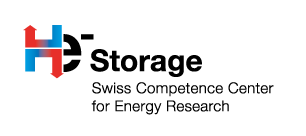About JASM
The Joint Activity Scenarios and Modelling (JASM) aims at providing a set of robust scenarios for the realization of the Swiss Energy Strategy 2050.
The modeling groups of the 8 Swiss Competence Centers for Energy Research (SCCER) work together and bring in their
respective experience in the field of electricity generation technologies, buildings, mobility, industry,
grids, biomass, storage and economy:
-
Biomass for Swiss Energy Future

BIOSWEET contribution focuses on the integration of biomass resources in the scenarios of the energy transition, especially investigating the role of biomass in the energy system considering the industrial heat, electricity and raw materials integration with advanced district heating or decentralized solutions, seasonal storage and the use as fuel for mobility.
-
Competence Center for Research in Energy, Society and Transition

CREST contributes with the analysis of the economic consequences of the energy transition; and the role of markets, company strategies (i.e. investments), and consumer behavior (i.e. investments and consumption patterns).
-
Efficiency of Industrial Processes

EIP contribution focuses on evaluation the impact of energy efficiency measures and technologies in different industrial sectors, considering in particular the efficient usage of electricity in industry and the CO2 mitigation effects.
-
Future Energy Efficient Buildings & Districts

FEEB&D contributes with an analysis of to what extent the energy performance of the building stock can be improved by 2035 and 2050 and how this can contribute to the realization of the Energy Strategy 2050.
-
Future Swiss Electrical Infrastructure

FURIES contribution focuses on analyzing how to balance hourly and season variability in the power grid, by modelling aggregated/heterogeneous resources of the power grid at different granularities (from transmission to distribution) and at different time scales (seconds to years).
-
Heat and Electricity storage

HaE defines the role and the requirements of storage for the Swiss Energy Strategy 2050. To this end, HaE models energy systems and the value proposition of storage for those systems at high temporal resolution (≤1hour) and at various geographical scales, i.e. national, regional and local.
-
Mobility

In Switzerland, the mobility sector has the largest contribution to CO2 emissions. SCCER Mobility analyses alternative pathways for decarbonizing the transport sector in Switzerland, including technological changes, modal changes and behavioral aspects.
-
Supply of Electricity

SoE prime target is to develop robust perspectives for the replacing of nuclear and the electricity supply by 2050, to enable the required strategic decisions, investments and societal adaptation.







